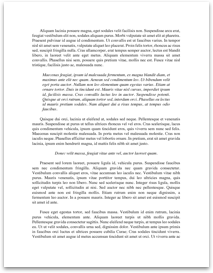Words of Wisdom:
"Keep your chin up. Some bugger will punch it."
- NewRaVer
Cement
Cement is a bonding agent which is generally used to bind:
Bricks
Tiles
Marbles
Stones
Concrete Blocks
Etc
Generally cement is used in two forms:
1) Mortar: A mixture of
Cement, Fine aggregate (generally sand), water (all in specific proportions).
2) Concrete: A mixture of
Cement, Fine aggregate (generally sand), Coarse aggregate (usually crushed stone), water (all in specific portions).
. Concrete is used for structural purposes, where the load has to be resisted.
History of cementing materials:
Around 2000 years before, the usage of cementing materials was started. We used (i) Clay (ii) Lime (and now) (iii) Cement
Portland Cement:
In 1824, first effort was made in producing the type of cement, with which we are familiar today. The inventor Joseph Aspiden produced a powder, made from a calcined mixture of lime stone and clay. He called it Portland Cement, because when it hardened, it produced a material resembling stones from quarries near Portland in England.
Modern Portland cement is made from materials which contain proper proportions of
. Lime . Silica . Alumina . Iron
With miner amounts of
. Magnesia (MgO) . Sulphur Trioxide (SO3)
The table below, indicates the range of oxide composition, usually used in normal/ordinary Portland cement
Oxide ingredient Range
Lime (CaO) 60-66%
Silica (SiO2) 19-25%
Alumina (Al2O3) 3-8%
Iron (Fe2O3) 1-5%
Magnesia (MgO) 0-5%
Sulphur Trioxide (SO3) 1-3%
All the above components undergo some chemical combination during the process of burning and fusion.
Portland Cement is a hydraulic cement i.e. it reacts with water to produce a substance that durable resists the effect of water and continuous to gain strength as long as the moisture is present. Compared with hydraulic limes, the strength gain is...
Cement is a bonding agent which is generally used to bind:
Bricks
Tiles
Marbles
Stones
Concrete Blocks
Etc
Generally cement is used in two forms:
1) Mortar: A mixture of
Cement, Fine aggregate (generally sand), water (all in specific proportions).
2) Concrete: A mixture of
Cement, Fine aggregate (generally sand), Coarse aggregate (usually crushed stone), water (all in specific portions).
. Concrete is used for structural purposes, where the load has to be resisted.
History of cementing materials:
Around 2000 years before, the usage of cementing materials was started. We used (i) Clay (ii) Lime (and now) (iii) Cement
Portland Cement:
In 1824, first effort was made in producing the type of cement, with which we are familiar today. The inventor Joseph Aspiden produced a powder, made from a calcined mixture of lime stone and clay. He called it Portland Cement, because when it hardened, it produced a material resembling stones from quarries near Portland in England.
Modern Portland cement is made from materials which contain proper proportions of
. Lime . Silica . Alumina . Iron
With miner amounts of
. Magnesia (MgO) . Sulphur Trioxide (SO3)
The table below, indicates the range of oxide composition, usually used in normal/ordinary Portland cement
Oxide ingredient Range
Lime (CaO) 60-66%
Silica (SiO2) 19-25%
Alumina (Al2O3) 3-8%
Iron (Fe2O3) 1-5%
Magnesia (MgO) 0-5%
Sulphur Trioxide (SO3) 1-3%
All the above components undergo some chemical combination during the process of burning and fusion.
Portland Cement is a hydraulic cement i.e. it reacts with water to produce a substance that durable resists the effect of water and continuous to gain strength as long as the moisture is present. Compared with hydraulic limes, the strength gain is...
Comments
Express your owns thoughts and ideas on this essay by writing a grade and/or critique.
Sign Up or Login to your account to leave your opinion on this Essay.
Copyright © 2024. EssayDepot.com

No comments